- (+91)9035 130 058
-
Nittuvalli New Extn,Near State Bank, Davangere-577004
-

Lumbar Spondylosis
Lumbar spondylosis is a common condition that affects the vertebral bones and intervertebral discs in the lower back. It is caused by degenerative changes such as wear and tear, aging, and osteoarthritis. Symptoms can include lower back pain, stiffness, and limited mobility. Treatment options include physical therapy, pain medication, and in severe cases, surgery.
The signs and symptoms of lumbar spondylosis can include:
• Low back pain
• Stiffness in the lower back
• Limited mobility or range of motion in the lower back
• Numbness or tingling in the legs
• Weakness in the legs or feet
• Muscle spasms in the lower back
These symptoms may be present all the time, or they may come and go. They can also vary in severity, from mild discomfort to severe pain.
-

Cervical Spondylosis
Cervical spondylosis is a condition that affects the cervical spine, or neck. It is caused by degenerative changes such as wear and tear, aging, and osteoarthritis. Symptoms can include neck pain, stiffness, and limited mobility. Additionally, nerve compression can cause symptoms such as tingling, numbness, or weakness in the arms, hands, and fingers. Treatment options include physical therapy, pain medication, and in severe cases, surgery.
The signs and symptoms of cervical spondylosis can include:
• Neck pain and stiffness
• Limited mobility or range of motion in the neck
• Headaches
• Tingling, numbness, or weakness in the arms, hands, or fingers
• Muscle spasms in the neck
• Difficulty with fine motor tasks, such as writing or buttoning a shirt
These symptoms may be present all the time, or they may come and go. They can also vary in severity, from mild discomfort to severe pain. In some cases, cervical spondylosis can cause more serious symptoms, such as balance problems or loss of bladder or bowel control, if nerve compression is severe.
-

Brachialgia
Brachialgia is a term used to describe pain in the arm, often referred to as arm pain. This can be due to a number of causes, including nerve impingement, injuries, arthritis, or referred pain from the neck or shoulder. in severe cases, surgery required. An accurate diagnosis is important for appropriate treatment and management of brachialgia.
• Aching or burning pain in the arm
• Tingling or numbness in the arm
• Weakness in the arm or hand
• Stiffness in the arm or shoulder
• Difficulty with fine motor tasks, such as writing or gripping objects
• Swelling or tenderness in the arm or shoulder
The location and type of pain can vary depending on the cause of brachialgia. An accurate diagnosis and proper treatment plan is important to manage arm pain and related symptoms.
-
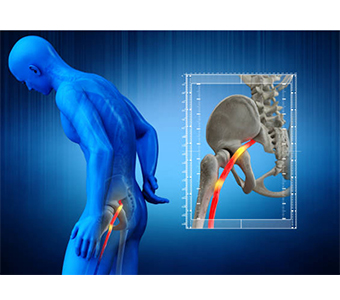
Sciatica
Sciatica is a term used to describe pain, numbness, tingling, or weakness in the lower back, hips, legs, and feet. This can be caused by compression of the sciatic nerve, which is the largest nerve in the body. Sciatica can be caused by a variety of factors, including herniated discs, spinal stenosis, and degenerative disc disease. Symptoms may be present on only one side of the body and can range from mild to severe. Treatment may include physical therapy, pain medication, nerve blocks, or in severe cases, surgery. An accurate diagnosis is important for appropriate treatment and management of sciatica.
The signs and symptoms of sciatica can include:
• Pain in the lower back, hips, legs, or feet
• Numbness or tingling in the legs, feet, or toes
• Weakness in the legs, feet, or toes
• Difficulty standing, walking, or controlling leg muscles
• A shooting pain that makes it difficult to stand or sit
• Burning or tingling sensations in the legs or feet
The symptoms of sciatica may come and go, or they may be present all the time. The severity of symptoms can also vary, from mild discomfort to severe pain. An accurate diagnosis is important for appropriate treatment and management of sciatica.
-
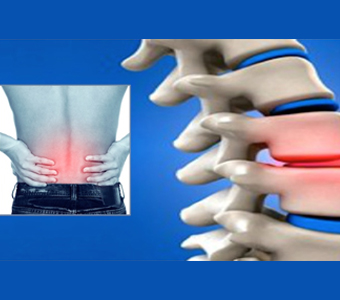
Slip Disc
A slip (also known as herniated) disc is a condition where the soft inner material of a spinal disc bulges out through a tear in the outer layer, putting pressure on surrounding nerves and causing pain. It can occur in any part of the spine, but most commonly in the lower back.
The signs and symptoms of a slip (herniated) disc may include:
• Back pain
• Leg pain (sciatica)
• Numbness or tingling in the leg or foot
• Weakness in the leg
• Arm pain and/or weakness (if disk is in cervical spine)
• Increased pain with certain positions or movements.
Note: symptoms may vary and can be mild to severe. Some people may have no symptoms.
-
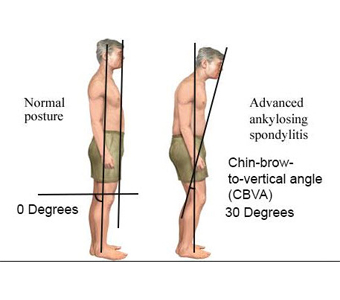
Ankylosing Spondylitis
Ankylosing spondylitis is an inflammatory disease that, over time, can cause some of the bones in the spine (vertebrae) to fuse. This fusing makes the spine less flexible and can result in a hunched posture. If ribs are affected, it can be difficult to breathe deeply.Signs and symptoms typically begin in early adulthood. Inflammation can also occur in other parts of the body.
The following are common signs and symptoms of ankylosing spondylitis:
• Back pain: This is a common symptom of ankylosing spondylitis and can be severe, persistent, and accompanied by stiffness, especially in the morning.
• Inflammation of the sacroiliac joints: This causes pain and stiffness in the lower back, buttocks, and hips.
• Stiffness: The affected joints become stiff, especially after prolonged periods of inactivity.
• Loss of flexibility: Over time, the stiffness can lead to a loss of mobility and flexibility in the back, neck, hips, and other joints.
• Fatigue: People with ankylosing spondylitis often feel tired and lack energy.
• Eye symptoms: Some people with ankylosing spondylitis develop eye inflammation, which can cause redness, pain, and blurred vision.
• Bowel or bladder problems: In severe cases, ankylosing spondylitis can affect the functioning of the bowel or bladder.
• Unexplained weight loss: Ankylosing spondylitis can cause weight loss, which may be accompanied by a loss of appetite.
-
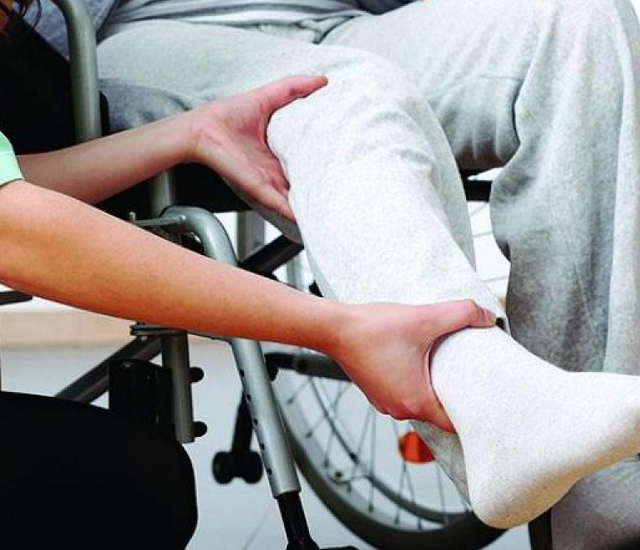
Paralysis / Stroke
Paralysis is a medical condition characterized by the loss of movement or sensation in a part of the body. It can occur in any part of the body and may be complete or partial.
The cause of paralysis can be from a variety of conditions including:
Trauma or injury to the spinal cord, Stroke, Neurodegenerative diseases such as multiple sclerosis or motor neuron disease.Infections such as polio or meningitis. Nerve damage or nerve compression. Tumors or brain injuries.
Paralysis can lead to a loss of control over movements, a loss of feeling in the affected body parts, and in some cases, a loss of bowel or bladder control. It can have a significant impact on a person's daily life and may require rehabilitation and support from medical professionals.
The signs and symptoms of paralysis depend on the type and severity of the condition. However, some common symptoms include:
Loss of movement: The affected body part may feel stiff, heavy, or unresponsive to commands from the brain.
Loss of sensation: There may be a decrease or loss of feeling in the affected body part, including sensations such as pain, touch, and temperature.
Weakness: The affected body part may feel weaker and be less responsive to movement.
Numbness: There may be a decrease or loss of sensation in the affected body part, including feelings of numbness, tingling, or prickling.
Spasticity: The affected body part may become stiff and have uncontrolled spasms or contractions.
Bowel or bladder problems: Paralysis can affect bowel or bladder function, leading to difficulties with elimination and incontinence.
Breathing difficulties: In severe cases, paralysis can affect breathing and lead to respiratory difficulties.
It is important to seek medical attention if you are experiencing any of these symptoms. Early diagnosis and treatment can help improve outcomes and reduce the impact of paralysis on a person's life.
-

Tennis Elbow
Tennis elbow, also known as lateral epicondylitis, is a condition that causes pain and inflammation in the outer part of the elbow. It is a common overuse injury in athletes, particularly tennis players, but can also occur in non-athletes due to repetitive activities such as typing or using tools.
Tennis elbow occurs when the tendons that attach the forearm muscles to the elbow joint become damaged, leading to inflammation and pain.
The main symptoms of tennis elbow include:
Pain: Pain is felt on the outer part of the elbow, which worsens with movements that involve lifting or gripping.
Stiffness: The elbow may feel stiff and may be difficult to move.
Weakness: The affected arm may feel weaker, especially when lifting or gripping objects.
Tenderness: The area around the elbow may be tender to the touch.
Swelling: There may be swelling around the elbow joint.
Treatment for tennis elbow typically involves rest, ice, physical therapy, and anti-inflammatory medications. In severe cases, a brace or splint may be recommended to immobilize the elbow and reduce the strain on the tendons. In some cases, surgery may be necessary to repair the damaged tendons.
-
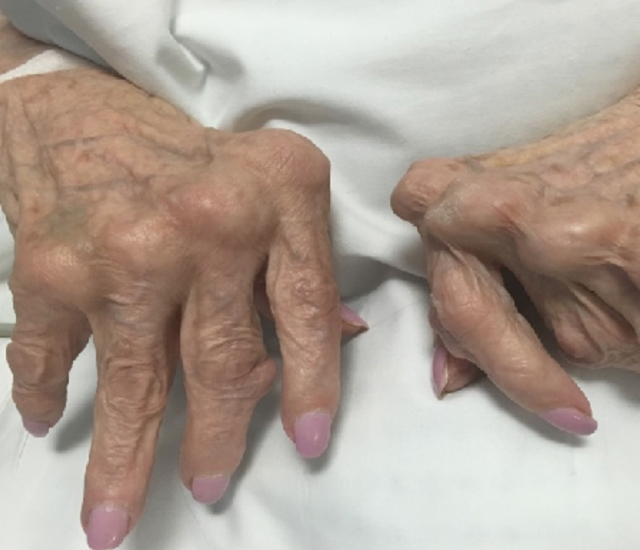
Rheumatoid Arthritis
Rheumatoid Arthritis (RA) is a chronic autoimmune disease that causes inflammation in the joints and surrounding tissue, leading to pain, swelling, and damage. It occurs when the immune system mistakenly attacks healthy tissue, causing pain, stiffness, and loss of function in the joints. RA can also affect other parts of the body, such as the eyes, skin, lungs, and blood vessels. There is no cure for RA, but treatments including medications, physical therapy, and lifestyle changes can help manage symptoms and slow disease progression.
The signs and symptoms of Rheumatoid Arthritis (RA) can include:
• Joint pain, swelling, and stiffness, especially in the hands and feet
• Fatigue
• Fever
• Loss of appetite
• Morning stiffness that lasts for more than an hour
• Warm, red, and tender joints
• Decreased range of motion
• Joint deformities
• Nodules under the skin near the joints
• Inflammation in other parts of the body, such as the eyes, skin, lungs, and blood vessels.
-
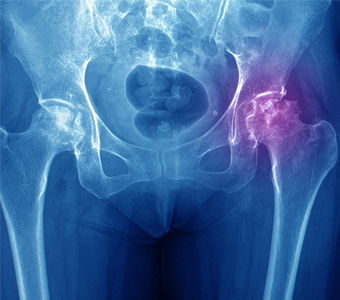
Avascular necrosis of hip joint grade I & II
Avascular necrosis of the hip joint (AVN) is a condition where there is death of bone tissue due to a lack of blood supply. It can lead to pain, joint damage, and in severe cases, collapse of the hip joint.
Grade I AVN refers to early-stage disease, with minimal or no joint damage.
Grade II AVN indicates moderate joint damage, with partial collapse of the hip joint.
The signs and symptoms of Avascular Necrosis (AVN) of the hip joint can include:
• Gradual onset of hip pain
• Stiffness in the hip joint
• Difficulty walking or standing
• Groin or thigh pain
• Decreased range of motion in the hip joint
• A noticeable limp
• A snapping or grinding sensation in the hip joint
• Joint swelling
• Loss of hip height
• In advanced cases, hip joint collapse and arthritis.
It's important to seek medical attention if you experience hip pain or other symptoms, as early diagnosis and treatment can help prevent the progression of AVN and minimize joint damage.
-

Osteoarthritis of knee joint grade I & II
Osteoarthritis (OA) of the knee joint is a common degenerative joint disease that occurs as a result of wear and tear on the knee joint over time. It causes pain, stiffness, and a decrease in joint function.
Grade I OA of the knee refers to early-stage disease, with mild joint damage and minimal symptoms.
Grade II OA indicates moderate joint damage, with more noticeable symptoms and limited joint function.
The signs and symptoms of Osteoarthritis (OA) can include:
• Pain in the affected joint, especially with activity
• Stiffness in the joint, especially after periods of inactivity
• Decreased range of motion in the joint
• Tenderness or swelling in the joint
• A crunching or grinding sensation in the joint
• Bone spurs around the joint
• Weakness or instability in the joint
• Decreased ability to perform everyday activities
• A noticeable limp or change in gait
• Joint deformities in severe cases.
-
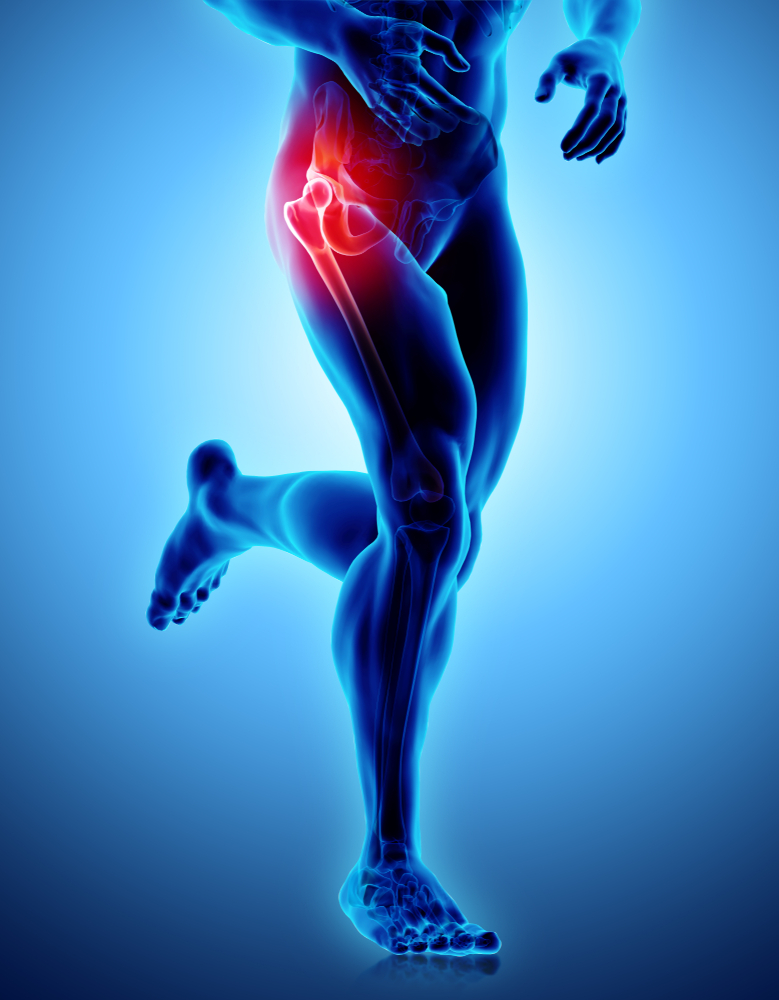
Osteoarthritis of hip joint grade I & II
Osteoarthritis (OA) of the hip joint is a common degenerative joint disease that occurs as a result of wear and tear on the hip joint over time. It causes pain, stiffness, and a decrease in joint function.
Grade I OA of the hip refers to early-stage disease, with mild joint damage and minimal symptoms.
Grade II OA indicates moderate joint damage, with more noticeable symptoms and limited joint function.
The signs and symptoms of Osteoarthritis (OA) of the hip joint can include:
• Pain in the hip joint, especially with activity
• Stiffness in the hip joint, especially after periods of inactivity
• Decreased range of motion in the hip joint
• Tenderness or swelling in the hip joint
• A crunching or grinding sensation in the hip joint
• Bone spurs around the hip joint
• Weakness or instability in the hip joint
• Decreased ability to perform everyday activities, such as walking or climbing stairs
• A noticeable limp or change in gait
• Joint deformities in severe cases.
-
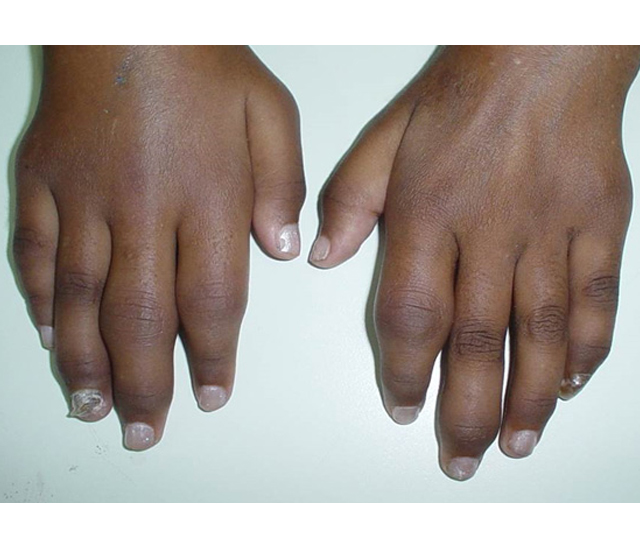
Viral Arthritis
Viral arthritis is a type of joint inflammation caused by a viral infection. It can affect one or multiple joints and cause pain, swelling, and stiffness.
Common viral infections that can cause viral arthritis include:
• Parvovirus B19
• Rubella
• Human immunodeficiency virus (HIV)
• Hepatitis B and C
• Coxsackievirus
• Echovirus
• Cytomegalovirus
Treatment for viral arthritis usually focuses on managing the symptoms, as the virus will usually run its course on its own.
The signs and symptoms of viral arthritis can include:
• Pain, swelling, and tenderness in one or multiple joints
• Stiffness in the affected joints, especially after periods of inactivity
• Decreased range of motion in the affected joints
• Warmth and redness over the affected joint
• Joint stiffness and pain that comes and goes
• Fatigue and fever
• Rashes or skin infections
• Nausea and vomiting
• Abdominal pain
• Diarrhea.
-

Frozen shoulder
Frozen shoulder, also known as adhesive capsulitis, is a condition characterized by pain, stiffness, and limited range of motion in the shoulder joint. It occurs when the soft tissues surrounding the shoulder joint (the capsule, ligaments, and muscles) become inflamed and tight, limiting joint movement.
The signs and symptoms of frozen shoulder can include:
• Pain in the shoulder, especially with movement
• Stiffness in the shoulder, especially after periods of inactivity
• Decreased range of motion in the shoulder
• Difficulty performing everyday activities, such as reaching overhead or combing your hair
• Aching or throbbing pain in the shoulder, especially at night
• Weakness or instability in the shoulder.